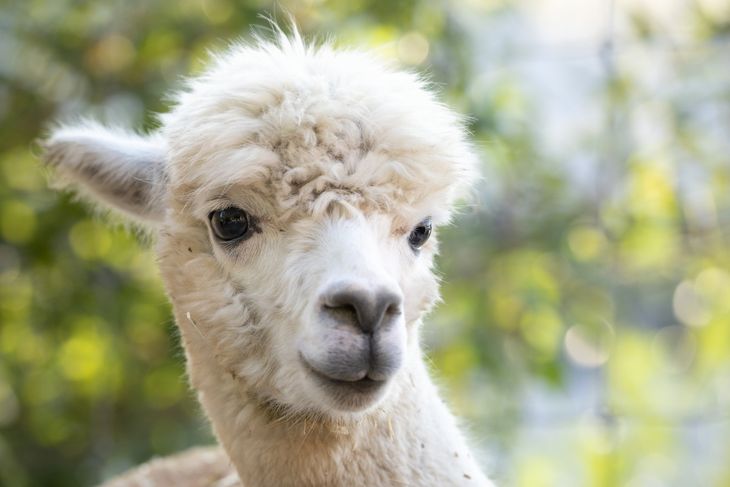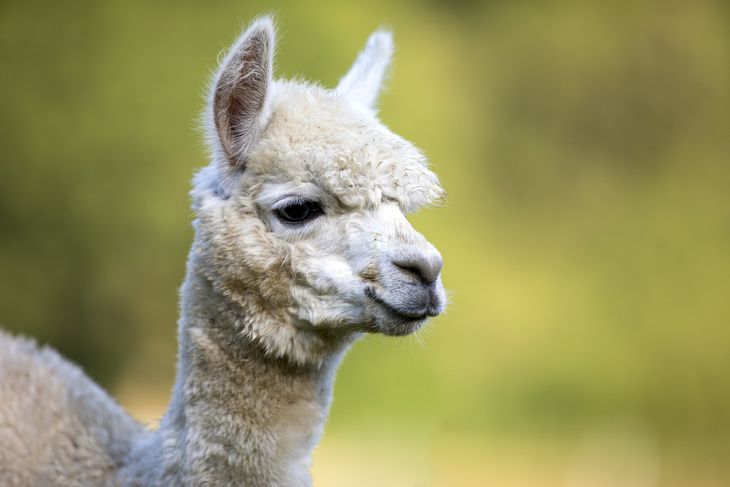VHH antibodies
to block viral entry into cells suited for the treatment of COVID-19.
Under development by VicuTec Biologicals GmbH, in association with Max Planck Institute for Biophysical Chemistry, University Medical Center in Göttingen, and the Lead Discovery Center Dortmund
VHH antibodies
The team has developed a large panel of anti-SARS-CoV-2 VHH antibodies that block viral entry into cells, and that appear perfectly suited for the treatment of COVID- 19. These VHHs are easy to express in simple microbial systems, allowing for economical large-scale production.
The VHH antibodies are derived from alpacas. Alpacas possess antibodies that are different from other antibodies, namely the simplest type of antibody.
The antibodies selected have extreme anti-viral potency: Picomolar concentrations suffice to inhibit infection by SARS-CoV-2 at least 10000-fold, even when the VHH are supplied in monomeric form.
This platform technology will be applied to other viruses, including known human and animal pathogens as well as potential future pandemic viruses. Tech transfer is now underway – with the support of Max-Planck-Innovation and kENUP Foundation - for taking the next steps on a fast track, including GMP production, pre-clinical and clinical trials as well as developing the anti-SARS-CoV-2 VHHs into commercial products.
Alpacas’ antibodies could help treat Covid-19 even before the symptoms
our insight of the week - August 7, 2020
Fiona, photo courtesy Max Planck Institute for Biophysical Chemistry
In recent years, alpacas experienced quite the hype: their faces started popping up on postcards and merchandise and so-called alpaca hikes were booked out months in advance, because of their supposed calming effect on people. And now, alpacas even play a role in fighting Covid-19.
The alpacas in question live on the campus of the German Max Planck Institute for Biophysical chemistry in Göttingen, their stables are surrounded by a large green area. Here, Dirk Görlich, director at the Max-Planck-institute for Biophysical chemistry, and Matthias Dobbelstein, head of the university medical center’s department of molecular oncology, are working on using the alpaca’s special antibodies to develop a treatment against Covid-19.
Normal antibodies have a structure composed of four polypeptide chains, where the light chain and the heavy chain have to combine to bind to the target, in this case the new coronavirus pathogen. This need for light and heavy chain combination makes it difficult to work with these types of antibodies. Alpacas and other camels have a simpler type of antibody, which lacks the light chain. So the difficulty of combining the chains is omitted. To simplify even further, it is possible to only take the part of the antibody that actually binds to the pathogen. These are the so-called nanobodies, or VHH antibodies. It is the simplest antibody fragment possible.
Alpacas, photo courtesy Max Planck Institute for Biophysical Chemistry
To obtain the nanobodies, Görlich and his team immunized the alpacas a couple of times. The picturesque conditions under which the alpacas are living also have a practical reason, Görlich explains: “They are very friendly, but big and quite stubborn, so if you want to work with them, you need to make them cooperate.” The staff has a strong bond with the alpacas, says Görlich, they communicate a lot and the alpacas are immunized in the same mild way as one would immunize children.
After the fifth immunization, the Max Planck team was able to isolate and extract lymphocytes, the immune cells that contain the building blocks for the antibodies, from a blood sample. After extracting and amplifying them, they transferred them to their selection system. “We can afford the gentle treatment of the alpacas with only light immunization because of our powerful selection procedure”, Görlich says. “If there is one good nanobody amongst 100 million, we will find it.”
During the selection procedure, the nanobodies come in contact with a key part of the virus SARS-CoV-2, the part that infects the cells in the patient’s body. Through so-called phages, viruses that infect bacteria and can decode RNA building plans, Görlich was able to select the nanobodies that bind very strongly to that specific part of the coronavirus. Microbes, such as benevolent bacteria or yeast cells then help to produce them. All of this happens in small plastic tubes, shaking flasks or a fermenter, Görlich explains, the alpacas never come in contact with the virus nor are they bothered with the actual production of the nanobodies.
Out of the purified nanobodies, Matthias Dobbelstein identified the ones that would prevent an infection with the virus. What his team found looked very promising, he explains: “I was deeply impressed to see that these nanobodies seem to fully prevent virus infection of cultured cells at a very low concentration.” Görlich also sees great results: “If you need a gram of antibody to save a patient and you can only produce a few kilograms, you can only save 1000 people. We would like to save millions. These nanobodies at least have the potential to do so.”
Greta, photo courtesy Max Planck Institute for Biophysical Chemistry
There are three main advantages of using nanobodies over conventional antibodies, Dobbelstein explains. Firstly, production is easier and cheaper, which is an important factor in getting the treatment to as many people as possible as fast as possible. Secondly, the pool from which you can select the best-binding nanobodies is far larger compared to conventional antibodies – several hundred million instead of a few thousand. Thirdly, nanobodies are also less likely to induce unwanted inflammatory reactions, so an overreaction of the immune system. “In the case of Covid-19, a disease which is largely inflammatory, this is especially important”, Dobbelstein says.
If Görlich and Dobbelstein are successful, the nanobodies would work as a preventive measure immediately after someone had an infectious contact. The nanobodies target the part of the virus’ cycle that is most crucial: when it tries to enter the cells. “If you prevent it from entering, it cannot infect and spread”, Görlich says.
During a later stage, when the first symptoms arise, the nanobodies could still be very effective. The goal is not only to prevent a fatal outcome, Görlich adds, but also to prevent permanent damage in patients’ organs, especially patients affected severely by the disease.
Görlich’s and Dobbelstein’s next step is to set up large scale production. “We want to move from milligrams to kilograms”, says Görlich. In the most optimistic timeline, they could start the first tests with human volunteers six months from now.
Even though they both emphasize that it is too early to tell, they set themselves ambitious goals. “The best possible outcome is that patients who already have a fever can get an injection or even inhale the nanobody at their general practitioner and feel better the next day”, says Görlich. “Let’s assume you had an accidental exposure that you learn about through the corona tracing app on your phone”, Dobbelstein explains their best-case scenario. “Instead of just going into quarantine and passively waiting for the disease to manifest, you would inhale the nanobody and decrease the likelihood of catching the disease and to spread it to others by a lot.”
August 7, 2020 by kENUP



